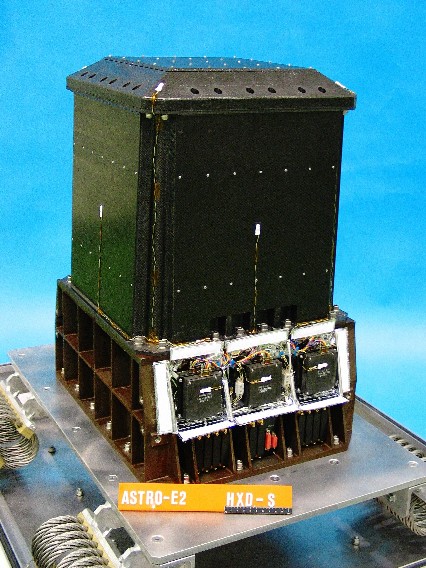X-ray Detectors - Seeing X-rays with Optical Light
In some materials, the energy of the incoming X-rays is converted into visible light. Detectors are designed using these materials by attaching photomultiplier tubes to read the flash of visible light.
Scintillation Detectors
Scintillators work by converting X-ray energy into visible light. The energy of the incoming X-ray is completely absorbed by the material, exciting a molecule of the detector material. When the molecule de-excites, it emits a pulse of light in the optical region of the electromagnetic spectrum. So the X-ray gets converted to optical light, which is much easier to detect.

Photo of the Hard X-ray Detector before it was installed on the Suzaku satellite. (Credit: JAXA/ISAS and NASA)
The best materials to use for X-ray detection are those that can be made into large crystals, have good X-ray stopping power, and are efficient light producers. So far the alkali halides NaI and CsI, "activated" by a small amount of either thallium or sodium impurity, have been the scintillators of choice.
Phosphor Detectors
In X-ray astronomy, we distinguish scintillators from phosphors by defining bulk crystalline materials such as NaI and CsI as scintillators and thin granular layers of rare earth oxysulphides as phosphors.
The physics of X-ray conversion for phosphors is essentially the same as described for scintillators. Also, the key functional elements of any phosphor-based detector are the same as for a scintillator. For astronomy, the similarities end there. While large area single crystals of NaI and CsI are valued for their stopping power in hard X-ray and gamma-ray astronomy, thin layers of phosphors are used to do high resolution, soft X-ray imaging.
Text updated: September 2018


